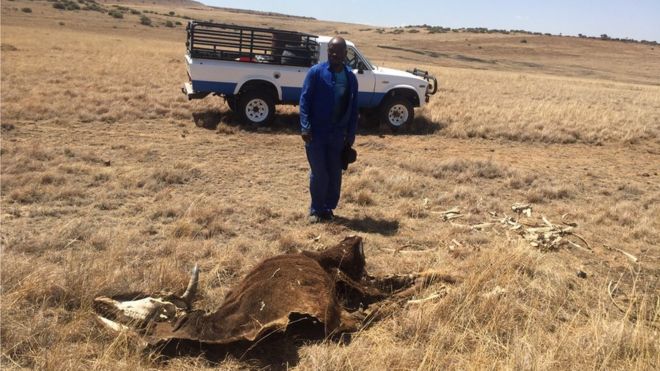South Africa's Situation
As promised, this week I will be delving deeper into
the water and food crises in South Africa. The drought is the worst the country
has seen in 113 years, and it has hit the Western Cape particularly hard. A result
of the El Nino climate phenomenon, the current water crisis has been ongoing
now for over a year. Highlighting the severity of the situation, the Department of Water and
Sanitation release weekly statistics for the state of the reservoirs in SouthAfrica, and almost all the gauging stations in the Western Cape showed a decline
in reached capacity. The document published on 31/10/2017 shows that in total,
the reservoirs in the Western Cape were 36.5% full that week, compared to 36.6%
the week before, and 60.3% at the same time last year. Clearly, there is a
declining trend.
 |
| Figure 1: South Africa's Western Cape |
Despite South Africa ranking first on the African continent for food security- the state in which peoplehave access to enough nutritious food to meet their dietary needs for a healthylife, the food supply in the Western Cape is anything but secure. Such drastic
reductions in the volume of water held in reservoirs has a huge impact on the
potential for a successful harvest. The state of the South African economy has
a crucial part to play in determining how well farmers respond to drought, and
consequently how successful their harvests are. In
their paper, Mdungela et al. (2017) discuss the economic vulnerability of South
Africa to drought using a vulnerability index based on a survey of farmers. Of
the 121 farmers surveyed, 86% admitted to being in un-payable debt; (the cause
of debt is not discussed in the paper, but I would like to speculate that this could be connected to costs of GM seeds discussed
in my previous posts). Without sufficient capital, farmers are unable to
provide adequate irrigation for their croplands during times of water scarcity,
and hence crop yields suffer. As well as this, drought leads to the death of cattle and so a rise in the price of meat, making it less affordable for poorer families.
 |
| Figure 2: A South African farmer posing next to dead cattle |
Drought
in South Africa results in a recurring shortage of food supplies, and so the
government must intervene to alleviate food shortages (Botterill and Fisher, 2003). Kamara and Sally (2010) published a paper in which
they test the effectiveness of different strategies under varying circumstances
using a model called Podium. They
conclude that if the percentage of land was increased by 5% then food shortages
would be reduced by 10%. However, the current drought across the Western Cape In May 2017, Helen Zille, the leader of the Western Cape province, announced thatshe planned to extract groundwater form the aquifer underneath Table Mountainto combat the water crisis. In my next post, I will be looking at the potential
of groundwater resources in Africa to overcome water and resultant food crises.

Comments
Post a Comment